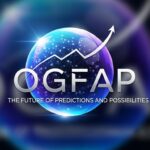Imagine a world where predicting outcomes is as effortless as tapping your smartphone. Welcome to the realm of OGFAP, or Optimized Generative Forecasting and Analysis Platform. This innovative technology harnesses the power of data and algorithms to provide insights into future trends, behaviors, and events. As we navigate an increasingly complex landscape filled with uncertainties, OGFAP stands out as a beacon of clarity.
The digital age has transformed how we gather information and make decisions. With OGFAP at our fingertips, businesses can streamline their strategies while individuals can better anticipate personal life choices. But what exactly is this groundbreaking tool? Let’s delve deeper into its mechanics and explore how it might change the way we perceive predictions and possibilities in our everyday lives.
What is OGFAP?
OGFAP, or Optimized Generative Forecasting and Analysis Platform, represents a cutting-edge approach to prediction technology. It integrates advanced algorithms with vast data sets to generate insights into future events.
At its core, OGFAP analyzes patterns from historical data. By understanding these trends, it can forecast potential outcomes across various scenarios. This capability makes it invaluable for businesses seeking competitive advantages.
What sets OGFAP apart is its generative aspect. Unlike traditional models that merely extrapolate existing trends, OGFAP creates new possibilities by simulating numerous variables in real-time. This allows for a more dynamic analysis of what could happen next.
From market shifts to social behaviors, the applications are diverse and far-reaching. As organizations increasingly rely on data-driven strategies, tools like OGFAP will play an essential role in shaping informed decisions across industries.
How does OGFAP work?
OGFAP operates by leveraging advanced algorithms that analyze vast datasets. These algorithms identify patterns and trends, allowing for predictions with remarkable accuracy.
The process begins by gathering information from various sources, such as social media, market analysis, and historical data. This wealth of data is then processed through machine learning techniques. The system learns continuously from new inputs to refine its predictive capabilities.
Once the data is analyzed, OGFAP generates forecasts based on probability models. It evaluates numerous scenarios to determine potential outcomes in a given context.
Real-time adjustments are made as fresh information comes in. This adaptability ensures that predictions remain relevant and accurate over time, enhancing decision-making processes across different sectors.
By integrating user feedback and external factors, OGFAP evolves into a more sophisticated tool capable of anticipating future events effectively.
Advantages of using OGFAP
The advantages of using OGFAP are numerous and impactful. First, it offers unprecedented accuracy in predictions. By analyzing vast amounts of data, OGFAP can identify patterns that might elude human analysts.
Another significant benefit is speed. Traditional forecasting methods take time to gather and analyze information. In contrast, OGFAP processes data in real-time, allowing for swift decision-making.
Scalability also stands out with this technology. Whether applied to small businesses or large corporations, OGFAP adapts effortlessly to varying needs without compromising performance.
Furthermore, the integration capabilities enhance its appeal. Businesses can seamlessly incorporate OGFAP into existing systems and workflows.
It democratizes access to predictive analytics. Smaller organizations gain insights once reserved for larger entities with substantial resources. This levels the playing field and encourages innovation across sectors.
Real-life applications of OGFAP
OGFAP has made significant strides across various sectors. In healthcare, it predicts patient outcomes based on historical data. This allows for more tailored treatment plans and better resource allocation.
In finance, OGFAP analyzes market trends and consumer behavior. Investors utilize these insights to make informed decisions, enhancing their chances of success in volatile markets.
Retail businesses also benefit from OGFAP technology. By predicting customer preferences, companies can optimize inventory management and personalize marketing strategies.
Additionally, smart cities employ to forecast traffic patterns and energy usage. This leads to improved urban planning and sustainability efforts.
Education systems are leveraging as well. By assessing student performance data, schools can identify at-risk students early on and offer targeted support programs.
Ethical concerns surrounding OGFAP
As OGFAP gains traction, ethical concerns inevitably arise. The potential for misuse is significant. Data privacy is one of the foremost issues. Sensitive information may be exploited if not properly safeguarded.
Moreover, bias in predictions can lead to discrimination. If relies on flawed data sets, marginalized communities might suffer disproportionately from its outcomes.
There’s also the question of accountability. Who takes responsibility when predictions based on OGFAP fail? This ambiguity raises anxiety among users and stakeholders alike.
Transparency is crucial but often lacking in technological advancements like this one. Without clear guidelines, trust erodes quickly within society.
There’s a philosophical dilemma: should we rely on algorithms to dictate our future? The human element must remain integral in decision-making processes, despite technology’s growing capabilities.
The future of OGFAP and its impact on society
The future of OGFAP holds immense promise for transforming various sectors. As predictive models evolve, we can expect more precise forecasts across industries such as healthcare, finance, and even climate change.
Imagine a world where businesses make data-driven decisions with unprecedented accuracy. This could lead to reduced waste and optimized resource allocation. Individuals might also benefit from personalized services tailored to their unique needs.
However, the societal implications are profound. Enhanced predictions could reshape job markets and require new skills among workers. Education systems may need to adapt swiftly to prepare the next generation for a rapidly changing landscape.
Moreover, accessibility will be crucial. Ensuring that technologies reach all segments of society is vital in preventing further inequality. The ethical debate surrounding these advancements will continue as they become integral to everyday life.
As we navigate this evolving terrain, public engagement will play a key role in shaping how OGFAP impacts our future communities and interactions.
Conclusion
As we navigate through the complexities of our modern world, stands out as a transformative tool. It offers unprecedented capabilities for predictions and possibilities that can reshape various industries. The technology is still evolving, but its potential applications are already visible across healthcare, finance, marketing, and beyond.
The ethical considerations surrounding cannot be overlooked. As with any powerful tool, there is a responsibility to use it wisely and thoughtfully. Society must strike a balance between innovation and ethical standards to ensure this technology serves the greater good.
Looking ahead, OGFAP will not just change how decisions are made; it could redefine what we consider possible in various fields. Its impact on society may foster advancements that enhance quality of life while also prompting discussions about privacy and accuracy.
Embracing the future means understanding tools like —not merely as technological advancements but as cornerstones for progress in human decision-making and insight generation.






